Several years ago, I would have considered myself to be an anti-centers teacher. I liked the idea of them, but I could not make them work in my classroom. I tried really hard my first couple of years teaching, but they added so much work for me, and I wasn’t confident that my students were getting anything out of them, so I gave it up. I taught math through the traditional workshop approach with a mini lesson, work time, and closing, and I was happy with what I was doing. Then a few summers ago Debbie Diller’s Math Work Stations was all the rage, and I felt like I was the only teacher in the world who hadn’t read it and that didn’t feel successful at centers, so I gave it a try.
I was a little skeptical, because it was written for K-2 grade, and I’ve always felt like I was more of an upper elementary teacher. However, I did find a lot of ideas that I could adapt to make work stations work for my classroom, and I learned a ton about procedures and organization. There was a lot of trial and error my first year implementing math work stations, but it quickly became one of my favorite parts of my math instruction. I’ve posted pieces of how I run my math work stations, and I’m going to try to address some of the questions I’ve been asked over the years. Let me know if I leave anything out, and I’ll add it!
- When do you use math work stations?
My primary form of math instruction is still math workshop. On Mondays, Wednesdays, and Fridays, I have a traditional math workshop lesson where students have some type of math task during their work time. On Tuesdays and Thursdays, I implement math work stations instead of my usual work time. I have my mini lesson and closing, but the work time consists of work stations. I could easily see this working three days a week, but I have so many math tasks that I don’t feel like I can skip, so two days a week is what works for me.
- How long are your work stations?
On our work station days, my students go to two work station activities. They go to their first station for 20 minutes and then their second work station for 20 minutes. I have to use a timer to keep myself on track, or otherwise I completely lose track of time.
- How do you group your students?
I have my students grouped into pairs. I ability group my work station partners, but I keep into account personalities, behavior, etc. I group students with the same partner all year, but of course I make changes as needed. This makes differentiation so much easier, because I can adapt the activities to meet the group’s specific needs.
- How many station activities do you have?
I have 12 station activities, because I need one station for each group of students. This year I have 24 students, so I have 12 activities. A couple years ago, I only had 20 students, so I just had 10 activities. Next year, I’ll probably have 14 activities, because I like to have an even number of stations.
- How do you organize who goes to what station?
This is best answered with a picture! I smudged out my students’ names, but there are two names on each card. The students on a card go to the two stations beside their card. The group at the top left would go to Station 1 and then Station 2. The group at the top right would go to Station 2 and then Station 1. This means that each group is at a different station. The names are attached with velcro, and I move everyone’s name down a spot at the end of the day. Using this system, it takes me three weeks to rotate everyone through each station.
- What activities are in your stations?
I like for about 50% of my station activities to be on the material we are currently studying in class. The other half of the stations are usually a review of the skills we’ve already learned during the year. My stations consist of a lot of task cards, games, and a few store bought activities. Here’s a look at my lesson plans for next week. You can see where I list my work station activities and underneath each station I’ve listed how many weeks the station as been in rotation.
- How do you organize your stations?
This is also best explained with a picture. Each one of my stations is numbered (Station 1, Station 2, etc.) and I keep all of the current station materials in labeled station tubs. I do have a couple of stations (ipads, math books) that don’t fit in the tubs, so I keep them in a different spot.
- How long do you leave your activities out?
I leave the center activities out for about six weeks weeks, but if it’s something they absolutely love, I may leave them longer, or if I feel that my students aren’t getting much out of them, I’ll remove them earlier. I do a quick whole group lesson with a lot the activities first, especially ones that I think may be confusing. If it’s something basic, I may just model the activity for the class before adding it into our rotation. I do record how long I’ve keep each station out in my lesson plans, so I don’t lose track of time. Sometimes I feel like a station has been out for an incredibly long time, when it’s only been a couple of weeks.
- How do you organize the activities that you’re not currently using?
I’ve tried a variety of strategies, and right now I like to keep everything organized in small stackable storage tubs. It does take up a little space, but I love being able to see everything in one place. It makes changing stations very easy for me. I will say that I don’t keep station activities that I don’t use or plan to use. If I don’t love it, I don’t keep it. This summer I plan to make cute labels, but for now, a Sharpie will have to do. (I have several more tubs on the shelf below). I try to group them by 9-weeks.
- What do I do during work stations?
At the beginning of the year, even though I REALLY want to hurry up and start, I don’t have small groups. I just walk around and monitor to make sure everyone is following the correct procedures. This is always hard for me, because I’m busting to start small group, but it pays off in the long run. Once everything is running smoothly, I start meeting small groups. This is one of the big reasons why I ability group, because it makes it so much easier to be able meet with both students in a group, rather than constantly splitting up partners. It doesn’t always work perfectly and sometimes students do have to work alone for one rotation.
- How do you hold your students accountable?
This one is tough! One of my biggest soapboxes as a teacher is accountability for students! I firmly believe that they have to be held accountable for their behavior, participation, and performance during work stations. I’ve played around with different rubrics, and this is the one I like right now. I could make something bigger and more thorough, but at this point I’m trying to keep it simple. I just fill out one of these each week for a work station grade, and that seems to be a big help. There are four rubrics on one piece of paper, so this helps me save paper and copies! Click on the picture to download the rubric!
- How do you challenge your higher learners?
It all depends on the activity. Some activities naturally lend themselves toward differentiation, and those are certainly the easiest. A lot of my larger bundles of task cards progressively become more difficult, so I may have some groups work on cards 1-24 and other groups work on cards 25-48. Other time, I have two activities in the tub and have my high learners work on the extension activities.
- How do you start the year?
I don’t start the year with 12 brand new math work stations. That would be next to impossible for me to explain 12 station activities all at one time. I usually just start with a few stations that my students had already had experience with as a whole group, so for the first week or two, I may have duplicate stations. I’ve found that it’s smart to start slow.
Remember, let me know what I’ve left out, and I’ll see what I can do!

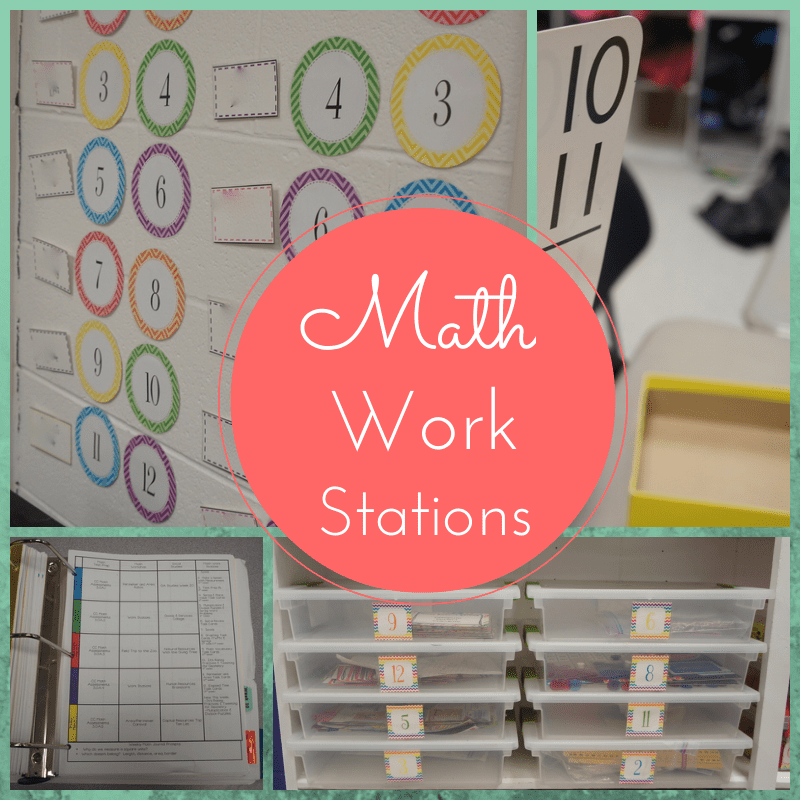
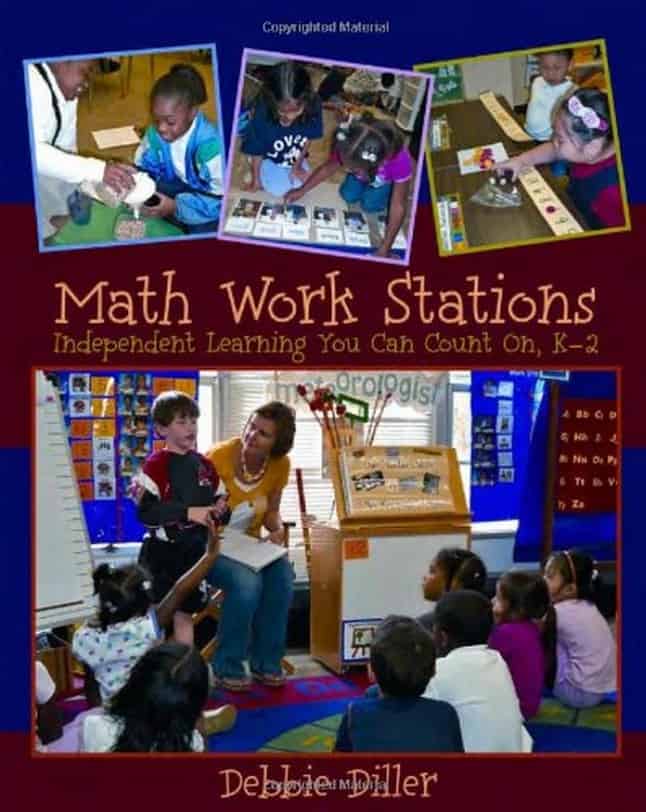
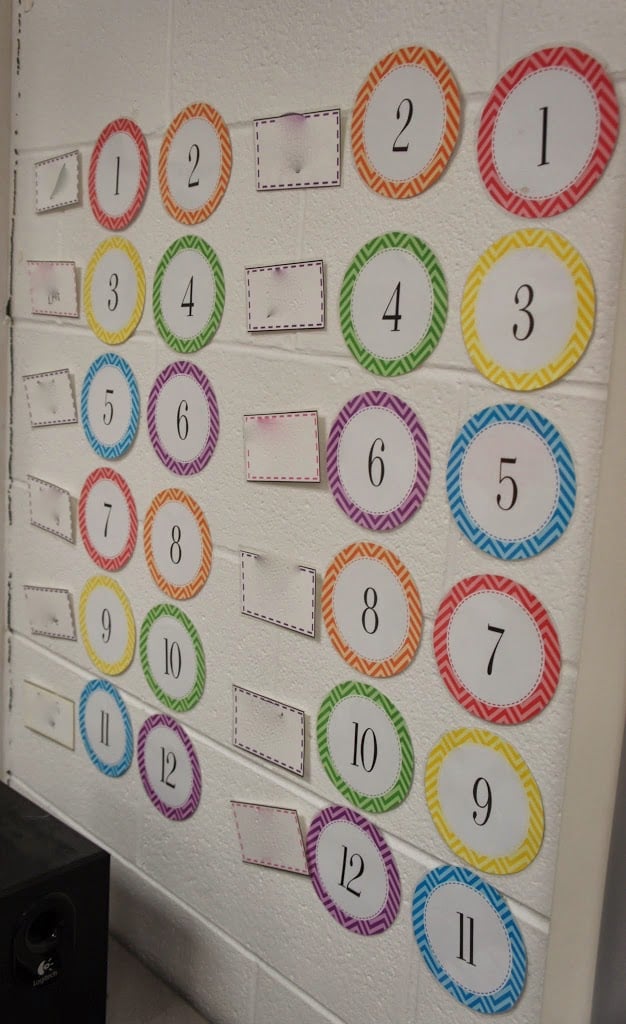
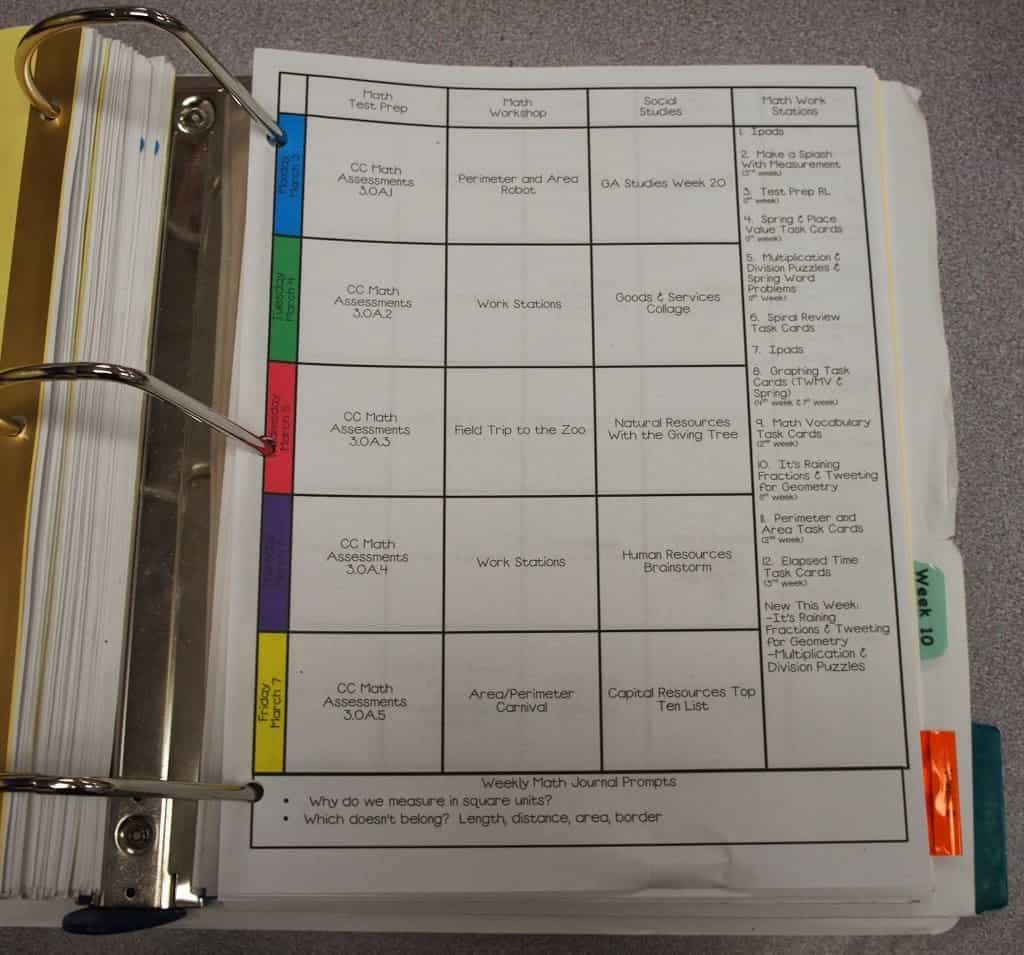
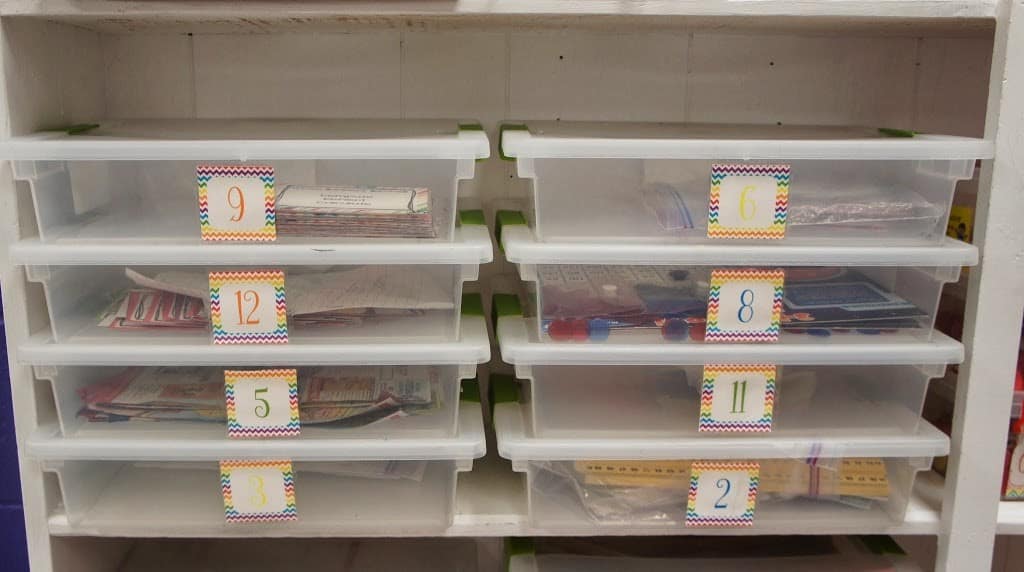
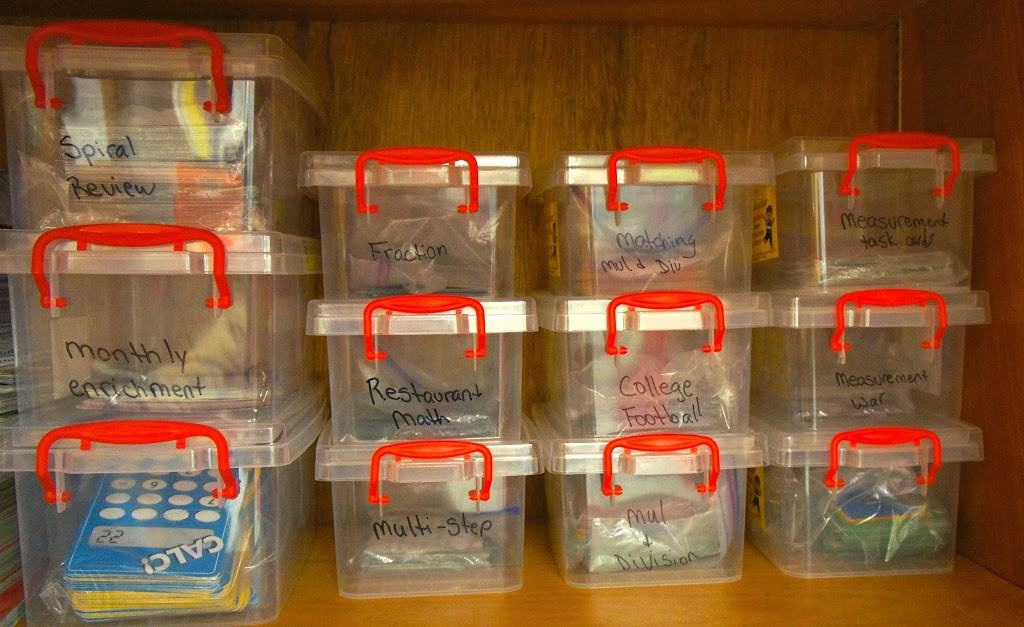
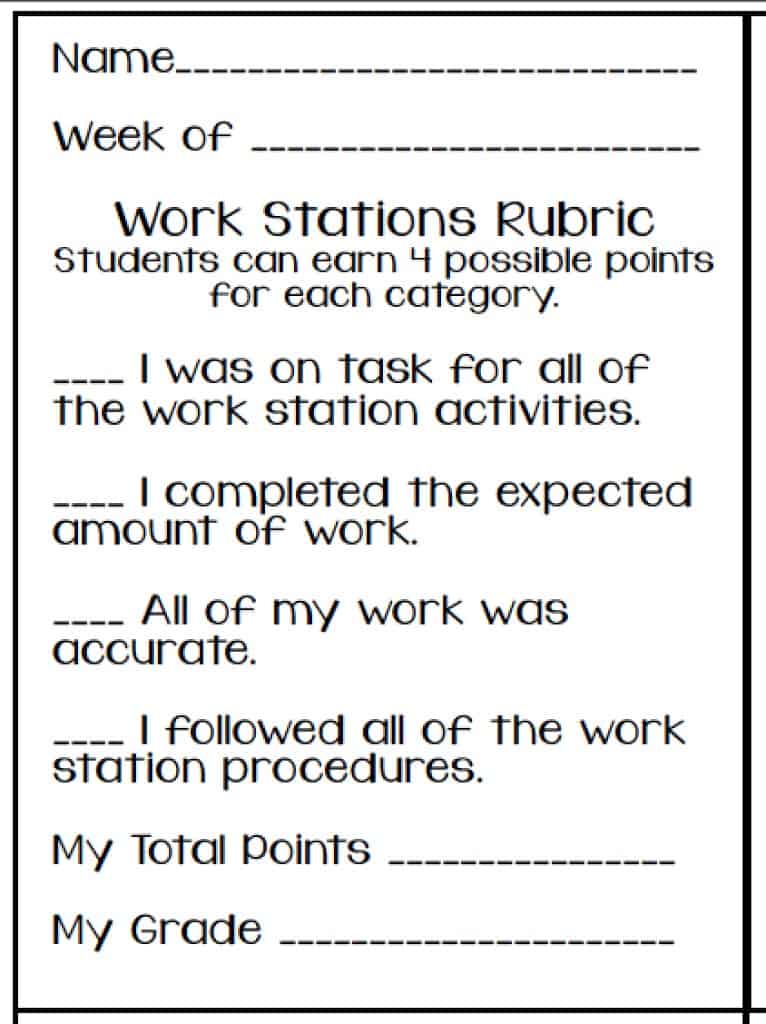


Can you show any examples of what the tasks actually look like please?
Thank you.